Хаас за Мексико
Ромен Грожан:
You’ve been taking part in pit practice lately. What roles have you played during these practice sessions and what has it been like to see pit stops from outside the racecar?
It’s actually quite fun. You know, I never changed a wheel before the Japanese Grand Prix. I was asked to come and push the car, because I’m part of the Operational 60, which I find surprising but, anyway, I was part of it. I got there and was asked if I’d ever changed a wheel. I said no, so I had a go. I loved it. I’m glad I don’t have to do it in a race. That’s a lot of pressure for the guys and it’s hard work. It’s great to spend time like this, though, and to get to do what the boys are doing every weekend. I did it again in Austin. I pushed the car. It’s quite hard work, it’s a heavy thing.
If you weren’t a driver, what position would you want to have on the pit crew?
Definitely not the front jack. Definitely not the rear jack. I would go for the gun.
How much does Mexico City’s altitude affect the car, from engine performance, to brake performance to aero performance?
Because we’ve got an engine turbo, we don’t lose that much performance. So, that’s a positive of the turbo era. Then, of course, the cooling of the engine, the cooling of the brakes, the downforce you get is very low compared to the wing you’re running. We have to work with it. I’m hoping we’re more prepared this year than in previous years. Hopefully, we can have a good race.
How much does Mexico City’s altitude affect you physically, especially during the race?
Not so much. I guess I’m used to the height from the mountains in Switzerland.
Grip has always been in short supply at the Autodromo Hermanos Rodriguez. How do you compensate for the lack of grip?
That I don’t know yet. It’s a work in progress. Hopefully, this year I’m much better than I was last year.
Finding grip means getting the tires into their proper working window. With 18 races having been run this season, have you discovered any tricks to the trade in getting a particular tire compound into its appropriate working range, and if so, how do you keep it there?
I think as the season goes on you’re always better toward the end than you were at the beginning. You know more things. We have a very limited amount of testing, so the races become tests as well. If you had the knowledge you have at the end of the year at the beginning, you’d be much better. Every year is a new start. It’s fresh, and with everything new, it’s difficult. I think we’re getting stronger every year. We’re getting better and better. We’re using every opportunity to get more experience.
Explain what you do in qualifying to get the tires into their proper working range so you can extract the maximum amount of performance out of them for a fast lap.
It depends a lot on the circuit. Some circuits you need a slow out-lap not to heat the tires too hard. Other circuits you really need to push hard on the out-lap to generate the temperature and the grip. It really does change circuit to circuit. We just have to go and see.
The stadium section seems to be the most talked about portion of the Autodromo Hermanos Rodriguez because of its sheer scope. What is it like to go through that area with all the fans in attendance during the driver’s parade, and what is it like to drive through there at speed during the race?
There’s a great atmosphere in Mexico. It’s probably one of the best of the year. The driver parade, going through the stadium, is special. During the race you don’t see it, but after the checkered flag, it’s great to see it. The podium being there makes for a great image. It looks awesome from the outside.
What is your favorite part about Autodromo Hermanos Rodriguez?
I like the first three corners. They’re pretty good.
Describe a lap around Autodromo Hermanos Rodriguez.
Long straight line going into turn one with big braking, 90 degrees right-hand side, followed by a small chicane. It’s very important to get the second part right because you’ve got another long straight line. Then you’ve got another 90-degree left corner, and then a 90-degree right corner. That’s followed by a very weird double right-hander. It’s very difficult to find a line. Then you go to the middle section which is flowing, with mid- to high-speed left and right corners. Next it’s the entry to the stadium – big braking here, very tricky with the wall facing you. Then it’s a very slow hairpin in the stadium, as slow as Monaco. Finally, it’s the double right-hand corner with very important traction going into the old part of the oval to finish the lap.
Кевин Магнусен: You had an incredible race in last year’s Mexican Grand Prix. After qualifying 18th, you finished eighth, but you had to hold off Lewis Hamilton during the final four laps to earn that result. How did you work your way to the front and what did you have to do to keep Hamilton behind you?
Last year’s Mexican Grand Prix was great for us. We didn’t qualify very well, but we made our way back in the race to eighth. We were able to capitalize on other people’s mistakes. It got us into a great position, and then I fought that position hard until the end of the race to bring home some good points on a weekend that didn’t look like we were going to score points.
How much does Mexico City’s altitude affect the car, from engine performance, to brake performance to aero performance?
The altitude affects mainly the aero. These engines are turbo engines, and we’re also very dependent on electric energy, so the percentage that we lose is less than it used to be. We lose downforce from the thin air, we then lose drag as well, and we also lose cooling. We have to open the car more to get that cooling, both on the brakes and the engine and the oil, on everything. That then compromises the efficiency of the car. It’s the same for everyone. We’re all dealing with it.
How much does Mexico City’s altitude affect you physically, especially during the race?
You don’t really notice it so much. You can feel that the air is thinner, that you have to breathe a bit more, but you get used to it.
Grip has always been in short supply at the Autodromo Hermanos Rodriguez. How do you compensate for the lack of grip?
You need a lot of downforce there. As the air is thin, you lose downforce. It’s pretty tricky. You can see the effect it has on top speeds. Because the air is so thin, you don’t have a lot of drag from the air down the straight. Our maximum speeds go very high.
The stadium section seems to be the most talked about portion of the Autodromo Hermanos Rodriguez because of its sheer scope. What is it like to go through that area with all the fans in attendance during the driver’s parade, and what is it like to drive through there at speed during the race?
You don’t really pay attention as the race is going on and you’re competing. You sense it on the driver parade and after the race. You also get the atmosphere every time you arrive and leave the circuit. You see all the fans going crazy. That’s what makes the Mexican Grand Prix special – it’s the fans more than anything.
What is your favorite part about Autodromo Hermanos Rodriguez?
I would say the stadium section.
Describe a lap around Autodromo Hermanos Rodriguez.
Fast, low-grip and difficult.
Your dad, Jan, has been able to carve an impressive sports car career in the United States, most recently by winning the 2018 GTLM driver and team championships in IMSA. What’s it been like to have parallel racing careers, albeit in different series?
It’s all I’ve known. I feel like it’s something that we enjoy. It’s interesting the conversations that we can have between ourselves. We always try and learn from each other, which is cool when you’re father and son. We can talk about our passion on such a professional level. We race in two different worlds, but it’s interesting to get insight into each other’s world.
You were actually able to see your dad win this year’s championship in person at Road Atlanta. What was that like and had you ever been in that position before?
I’m so happy I went to watch the race. We had a great time. My brother and sister were there, as well. I was hanging out with them, spending time with them – it’s rare that I get to do that. That was a bonus, a big bonus. In general, watching my dad race is great. I enjoyed it so much. Nowadays, it’s so rare that I get to do it. For him to then win the championship, the one time I come see him, it’s just great.
Is racing with your dad something you’d like to do in the not-so-distant future? If so, is there a specific race where you’d like to compete with your dad?
It’s very difficult to say what kind of opportunities we might get to do in the near future. Certainly, I hope he continues to race long enough so we can go and do a race like Le Mans or Daytona together. It would be a dream come true to compete at such a high level with my dad.
Гюнтер Щайнер: Magnussen had an incredible race in last year’s Mexican Grand Prix. After qualifying 18th, he finished eighth, and he had to hold off Lewis Hamilton during the final four laps to do so. He said that result felt like a victory. What do you remember about that drive and what did it feel like for you?
I think it was one of those days in racing where everything just goes right. He did a great job to hold off the world champion, so for sure, it felt like a victory. It was a great result for the team, because if you qualify 18th, you’re not counting on getting points.
Haas F1 Team has done a very good job of managing its power unit allotment this year, which decreased from four in 2017 to three in 2018. How have you been able to rotate power units to where you can work within these rules and still have the best power unit available for a race?
I think we can, but we’re not at the end of the year, so I don’t want to be optimistic. Our plan is to live within our allocation of three power units and not get any penalties. That is the aim. There are still three races to go but, hopefully, we can achieve it because Ferrari is doing a good job. All the other power units in all the other Ferrari-powered cars are still on target.
Haas F1 Team uses Ferrari power, and in 2018 that power has never been better. How has the team’s chassis and Ferrari power complemented one another?
You can see in the results that we’re achieving. We’re fighting for fourth place in the constructors’ championship. That’s credit to what Ferrari does and what we do.
How much does Mexico City’s altitude affect the car, from engine performance, to brake performance to aero performance?
The biggest effect comes from losing aero performance because of the thinner air. A turbo engine doesn’t lose as much power as an aspirated one. A big issue is the cooling of the engine, because of the altitude. I think in the last two years we’ve learned a lot. Hopefully, this year we adapt better and have a good result.
Grip has always been in short supply at the Autodromo Hermanos Rodriguez. How do you compensate for the lack of grip?
This year we have more downforce than we’ve ever had before. Our plan is to use that. With downforce, you create grip. The aim is to have a good car like all the other places we’ve had this season.
Finding grip means getting the tires into their proper working window. With 18 races having been run this season, have you discovered any tricks to the trade in getting a particular tire compound into its appropriate working range, and if so, how do you keep it there?
There are no tricks, it’s all hard work. The addition of one of our engineers, Hiroshi Tomitsuka, has helped a lot in our understanding of the tires better. It’s just a lot of hard work and data crunching to get the tire working in the best window.
Explain what you do in qualifying to get the tires into their proper working range so you can extract the maximum amount of performance out of them for a fast lap.
What you try to do is get the tire to the temperature you want to have it for when you cross the start-finish line. At the beginning of the lap, at turn one, you’re already in the temperature window, then you’re not running too hot when you come out of the last turn. Every track is different and every day is different because of the temperature. It’s a very difficult task, and it’s very difficult to do it mathematically. It also involves a lot of driver feeling – what is best to do. Then with the traffic coming into play, sometimes you want to achieve a target, but you cannot because you’re on your out-lap in traffic and you cannot achieve the temperatures. It’s a very difficult task, but it’s the same for everybody. It’s a lot of planning and there’s a lot of management involved in it.


















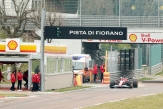
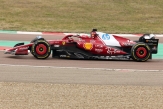
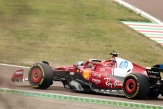

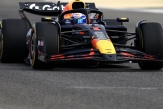
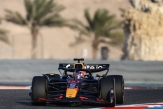
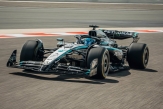
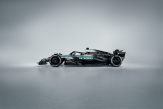
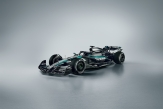
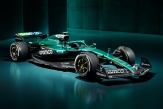

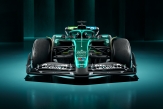
.jpg)
.jpg)
.jpg)
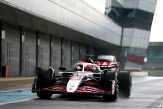
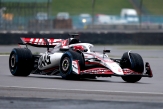
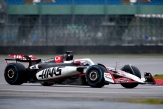
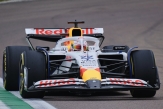
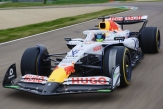



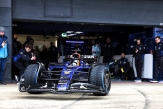
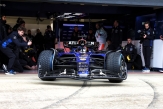
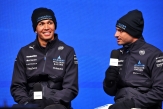

02/12/2025 от Огнян Тенчев (drJeckyll), няма коментари